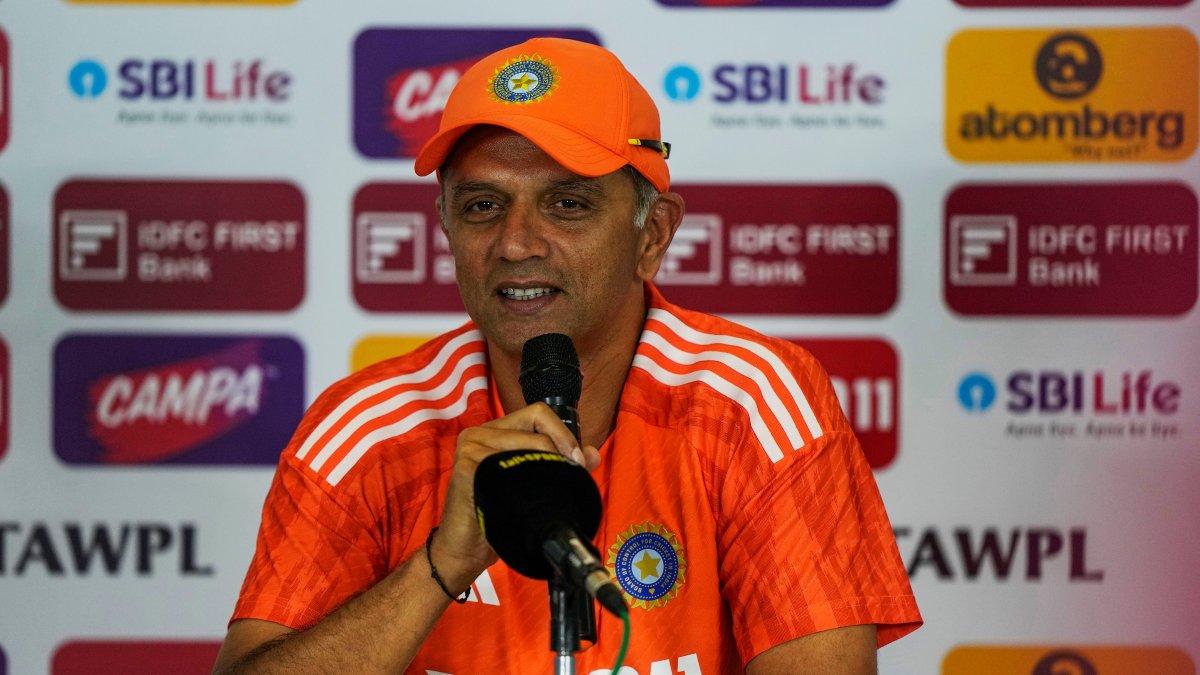Rahul Dravid, who is on his way out as the Team India head coach, revealed his coaching philosophy in an interview with BCCI’s social media team. In the video, the former India captain opened up on why results are secondary to him and the relationship he built with captain Rohit Sharma and star batter Virat Kohli during his two-and-a-half year tenure.
Dravid opened up about his philosophy as a coach and why he believes that the job is more about creating a safe environment than chasing results.
“I like to believe that coaching is not just about coaching cricket. This is about building connections with the people and creating right environment that allows for success. I feel that I am a part of the team whose responsibility is to create the right professional, safe, secure environment that really doesn’t have fear of failure as such but its challenging enough to push people. That is always been my endeavour to try and create that atmosphere,” he says.
“I am someone who likes continuity in life. I don’t like chopping and changing too many things because I think that creates a lot of instability and doesn’t create a very good environment.
“The vision of course is to win a cricket game. You try to win as much as you can. But I always look back to the fact that what is it that leads to the winning? How do you win more games? What is the process required to win more games? For me the vision was to get that process right. Ticking all those boxes. How do you challenge the players enough? How do you practice enough, how do you well prepare tactically and technically? Are we supporting the players in the right way? These are the things I wanted to tick before going on to the winning. Hopefully, if we would do most of these things, winning will take care of itself.”
“As a coach at the end of the day my job is to help the captain deliver his vision, his philosophy of how he wants the team to play,” says Dravid.
“I don’t really like talking more about results. Yes results are important. I am in a business that runs on results.
“I think results are the factor of many things. When you are constantly rotating players and the kind of number of players you will have to play in spite of that the kind of results we got in these past months have given me more satisfaction,” he says.
Dravid said he has loved working with Rohit and enjoyed watching him grow as a player and now as a leader.
“I have really enjoyed working with Rohit. He is someone I knew as a young boy. Just to see him grow as a person, grow as a leader in Indian cricket. He is someone who is able to contribute to the team in the last ten or twelve years, both as a player and now as a leader. It has been a real tribute to him and the effort he has put in the time he has put in. I really enjoy getting to know him as a person as well,” says Dravid.
On his bond with Kohli, Dravid said: “I only had a chance to work with him in a couple of series, in a couple of Test matches when he was the captain. I am getting to know him as well. His desire to improve, his desire to get better is fascinating to watch.”
Dravid says the post-COVID era meant the cricket calendar was packed. Instead of complaining about the burnout, Dravid saw it as an opportunity to give time to the youngsters and build two squads, who can play in different squads when needed.
“One of the things that we really had to manage in my early part of coaching tenure here with India was … we’re just coming out of the Covid. The voice that came out from the COVID was that there were too many restrictions for players. We really had to manage their workload through all three different formats. There were few injuries. We had five or six captains in the first eight or ten months of me being here. It is not something that I thought about but it sort of organically happened,” he says.
“I think the other thing that happened and presently which is happening is that due to COVID we had to play too many series and cram in a lot cricket. There were times we actually had two teams playing in different parts of the world.
“And it so happened that in the last two-and-half years especially in white-ball cricket we’re able to give opportunities to a lot of young people.
“I was glad to see how quickly they adapted to the international cricket and the kind of performances a lot of these young boys out in as soon as they came. I think that’s a real tribute to the system as well.
“Some of them developed and stayed in the team for longer, some of them were there in the team because the seniors were injured. They will get their chances.
“The hardest thing is that there are so many good young players and to decide which of them will play all the three formats regularly. It is one of the toughest decisions I had to make,” he said.
)